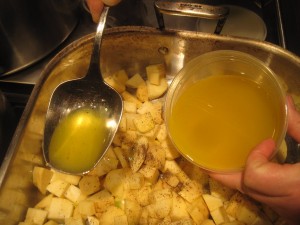A fryer chicken is a young chicken under 3 months old that is specifically bred and raised for meat production. Valued for its tender meat and smaller size, the fryer chicken is perfectly suited for quick cooking methods like frying grilling, and roasting. But what exactly distinguishes a fryer from other types of chickens? How does its age and size impact cooking and flavor? This comprehensive guide will cover everything you need to know about fryer chickens.
Understanding the Broiler Family
Before diving into the details of fryer chickens it’s helpful to understand where they fit in the broader category of broiler chickens bred for meat. Here’s a quick overview
-
Broiler – A young chicken under 10 weeks old weighing 2.5-4 lbs. This is sometimes used interchangeably with “fryer.”
-
Fryer – A young chicken 6-9 weeks old weighing 2.5-4 lbs. The quintessential chicken for frying.
-
Roaster – An older chicken around 3-5 months old weighing over 5 lbs. Better for roasting or stewing.
So fryers represent the middle ground – old enough to have good flavor, but young enough to be exceptionally tender.
Key Attributes of Fryers
Fryers possess certain characteristics that make them the prime choice for fried and grilled chicken dishes. Here are the most important attributes:
-
Tender and delicate meat – The moderate age and lack of developed muscles result in tender flesh that soaks up flavors.
-
Smaller size – Weighing 2.5-4 lbs, fryers offer the perfect single portion size for meals. This allows for quick, even cooking.
-
Thin, smooth skin – The skin fries up incredibly crispy and golden brown without being overly fatty or chewy.
Cooking with Fryers
Fryer chickens lend themselves well to almost any cooking method. Here are some of the best practices for the most popular preparation styles:
-
Frying – Fryers achieve the perfect balance of moist, juicy meat and an ultra crispy skin when fried. Temperature control is key.
-
Roasting – Roast fryers whole or spatchcocked for even cooking and simple flavors. They roast quickly, so watch the temp.
-
Grilling – Grill spatchcocked or butterflied fryers over direct medium heat. Marinate first for maximum moisture and flavor.
Fryer Chicken Nutrition
Fryers offer good nutritional value, especially the white meat:
-
Excellent source of lean protein – Great for building and repairing muscle.
-
Provides vital amino acids – Important for supporting metabolism and hormone function.
-
Rich in niacin – Helps convert nutrients into energy.
-
Good source of Vitamin B6 – Plays a role in immune function and red blood cell production.
Buying the Best Fryers
Follow these tips when selecting fryers for optimal quality:
-
Look for chickens specifically labeled “fryer” or “young chicken”.
-
Ideal weight range is 2.5-4 lbs.
-
Check for packaging indicating 6-9 weeks old.
-
Inspect skin for a smooth, shiny appearance.
-
Opt for organic or free-range for higher standards of raising.
-
For maximum freshness, choose fryers with the farthest “sell-by” dates.
Storing and Handling Fryers
Proper storage and handling prevents waste and foodborne illness:
-
Store raw fryers on the bottom shelf of the refrigerator. Use within 2 days of purchasing.
-
Never rinse raw fryers, as this spreads bacteria. Pat dry with paper towels instead.
-
Freeze raw fryers up to 9 months in a freezer bag to extend shelf life. Thaw in the refrigerator before cooking.
-
Cook fryers to an internal temperature of 165°F as measured by a meat thermometer.
-
Refrigerate cooked fryers within 2 hours and consume within 3-4 days for optimum safety and quality.
Creative Ways to Use Leftover Fryers
Put leftover cooked fryer chicken to delicious use in recipes like:
-
Chicken salad sandwiches
-
Hearty chicken pot pies
-
Tacos or enchiladas
-
Simple chicken noodle soup
-
Classic chicken casserole dishes
Shredded fryer chicken also works well in pasta salads, omelets, rice bowls and more!

Stewing Chickens—the easy one.
Stew birds are usually laying hens that have passed their prime. They are older and their meat can be tougher, but more flavorful. This type of chicken is best used in stews and soups where the meat has time to break down during the long, moist cooking. Many love them for chicken and dumplings and wonderfully flavored soups.
And our stewing hens also offer the most delectable schmaltz.
Regardless of how you cook the stewing hens, the most amazing golden yellow fat rises to the surface. So clear, radiant and beautiful. It reminds us of the color of our egg yolks.
Clearly, these hens are concentrating some delicious nutrition, including omega-3s, from the pasture, hay and organic grain and offering it back to us.
From our processing this week, we saw the thick layer of bright yellow fat in these hens. On some of them you have the option to just remove a big chunk of bright yellow fat and render it directly.

How to Make Crispy Old-Fashioned Fried Chicken (Best Ever) | Julia at Home
FAQ
What’s the difference between a fryer chicken and a regular chicken?
In summary, while both dishes are fried, chicken-fried chicken specifically refers to a pounded and breaded chicken breast served with gravy, whereas fried chicken consists of various parts of the chicken that are fried whole.
Why are they called fryer chickens?
Broiler chickens, also called “broiler-fryers,” originally got their name from a preparation method common for their meat due to their young age and their more tender flesh. When chickens are slaughtered at an older age, they may be called a “roaster.”
What is a fryer chicken used for?
A tender young chicken. The broiler, fryer, or roaster are all different names for the same bird at different weight ranges. Great for broiling, frying, or roasting.
